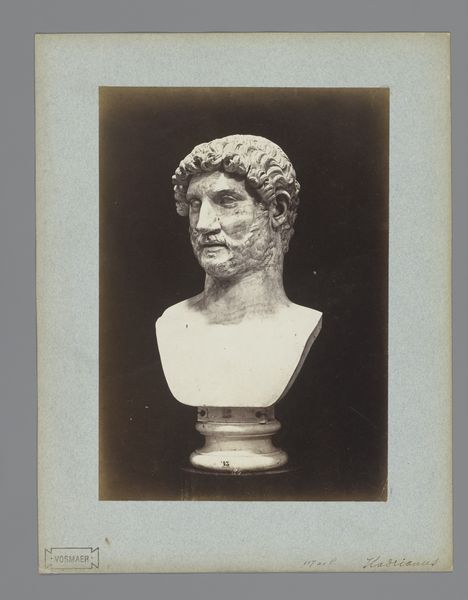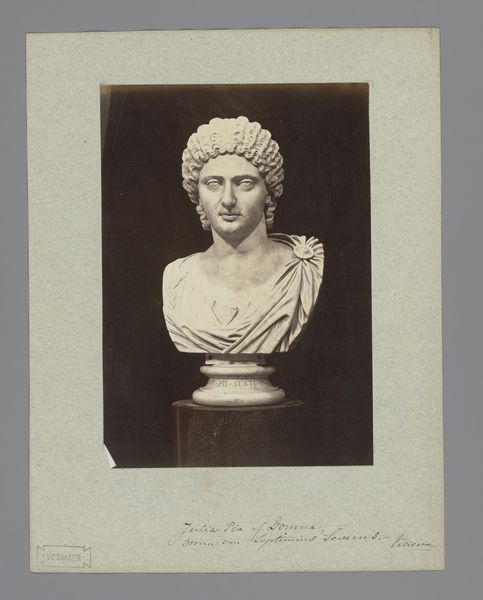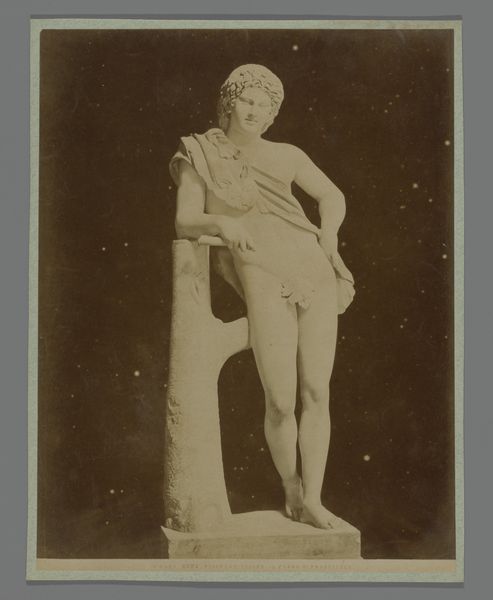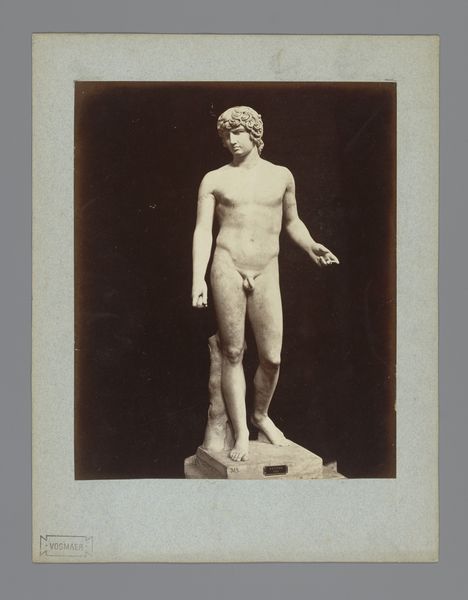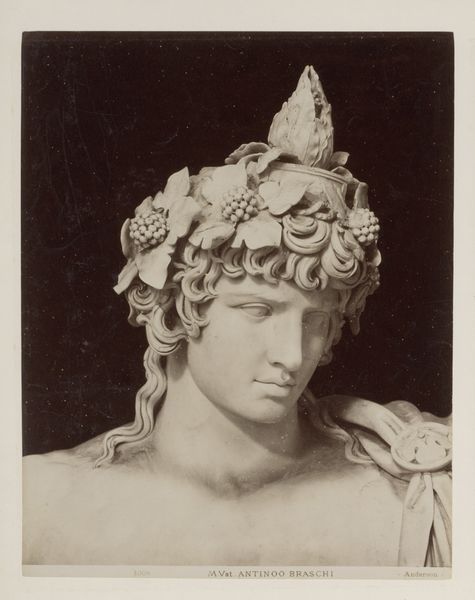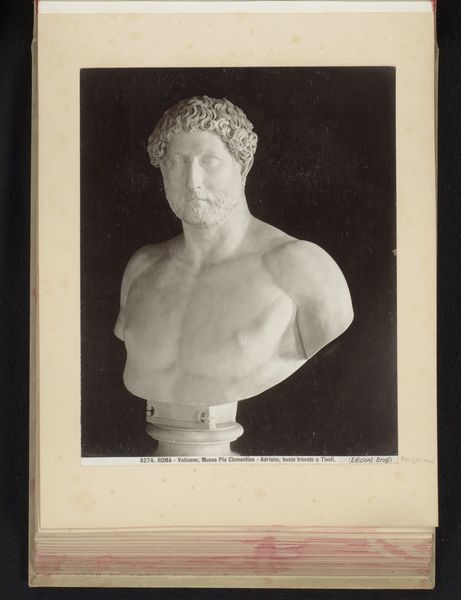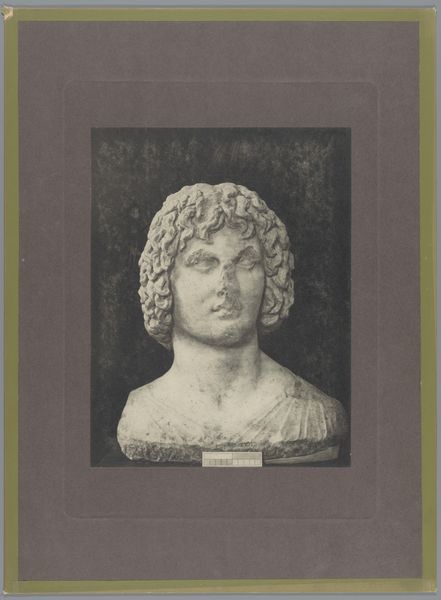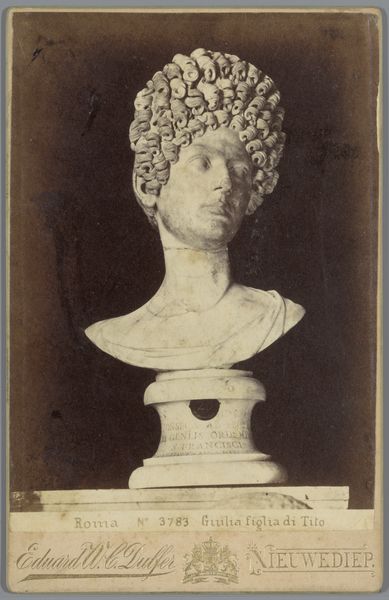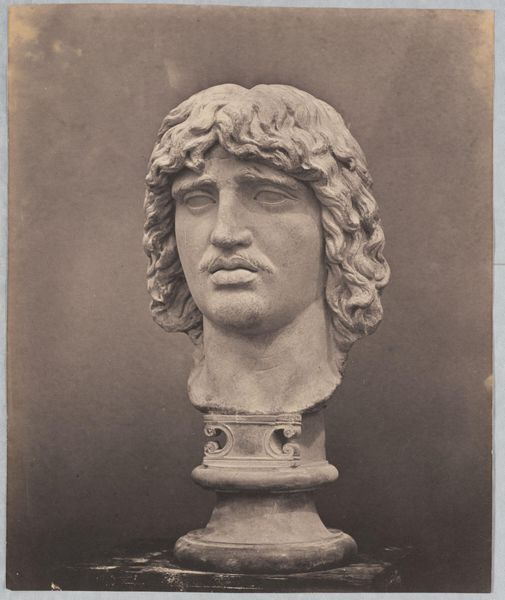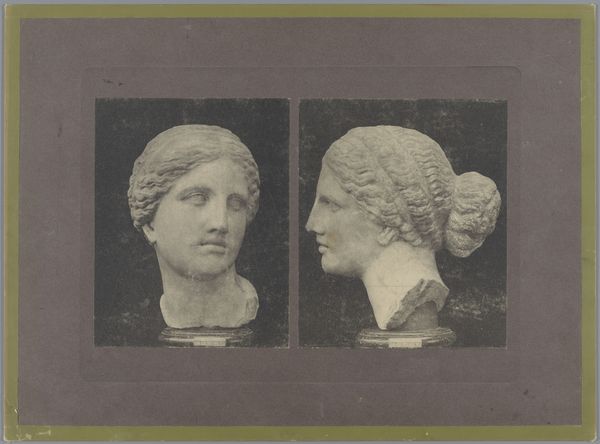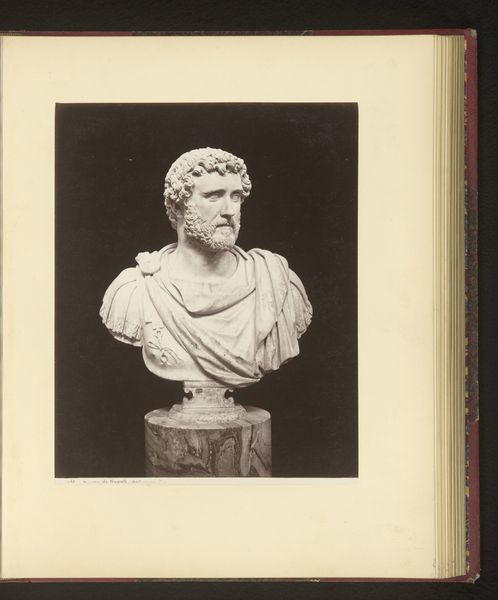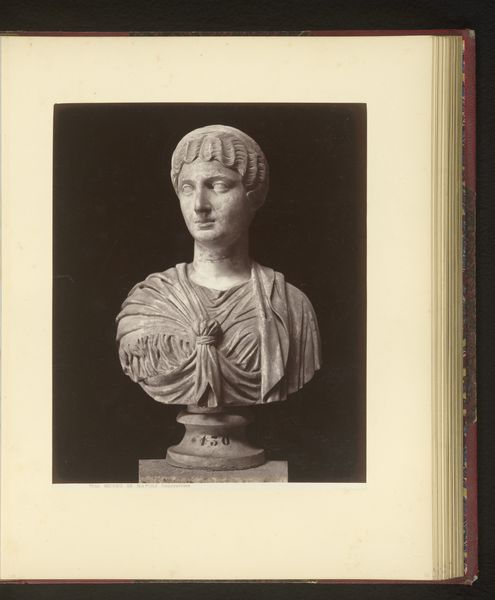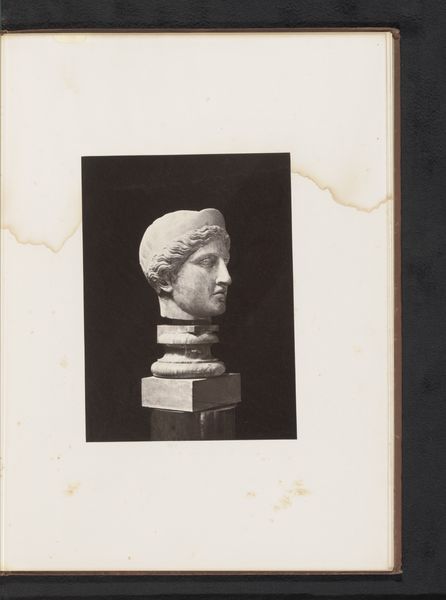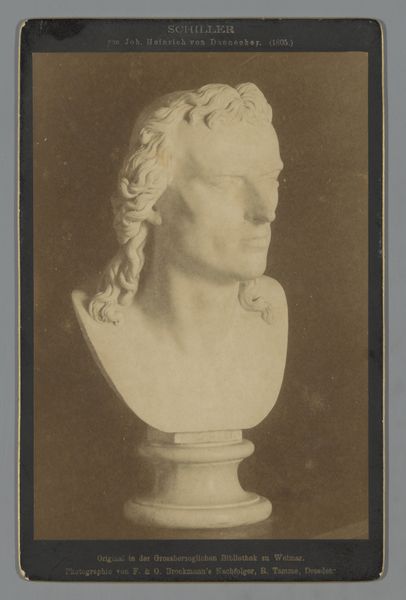
photography, sculpture
#
portrait
#
statue
#
sculpture
#
classical-realism
#
photography
#
ancient-mediterranean
#
sculpture
#
statue
Dimensions: height 270 mm, width 210 mm
Copyright: Rijks Museum: Open Domain
This photograph captures a marble bust of Antinous, who was the companion of the Roman Emperor Hadrian. The original sculpture was carved with chisels, rasps, and files, and the process would have involved many hours of skilled labor. The material itself, marble, is key to understanding the sculpture’s appeal. Its cool, smooth surface invites touch, while its density conveys a sense of permanence. The process of carving marble is subtractive, meaning that the sculptor must carefully remove material to reveal the form within, requiring precision and control. In this photograph, the texture of the marble is beautifully rendered. The play of light and shadow across the surface highlights the subtle contours of Antinous's face and hair. In its time, marble was a highly valued commodity, associated with power and status. The very act of producing a sculpture, whether in antiquity or today, involves a complex interplay of skill, labor, and economic factors. Appreciating this adds a new layer to our understanding of the final work, one that transcends traditional distinctions between art and craft.
Comments
No comments
Be the first to comment and join the conversation on the ultimate creative platform.
